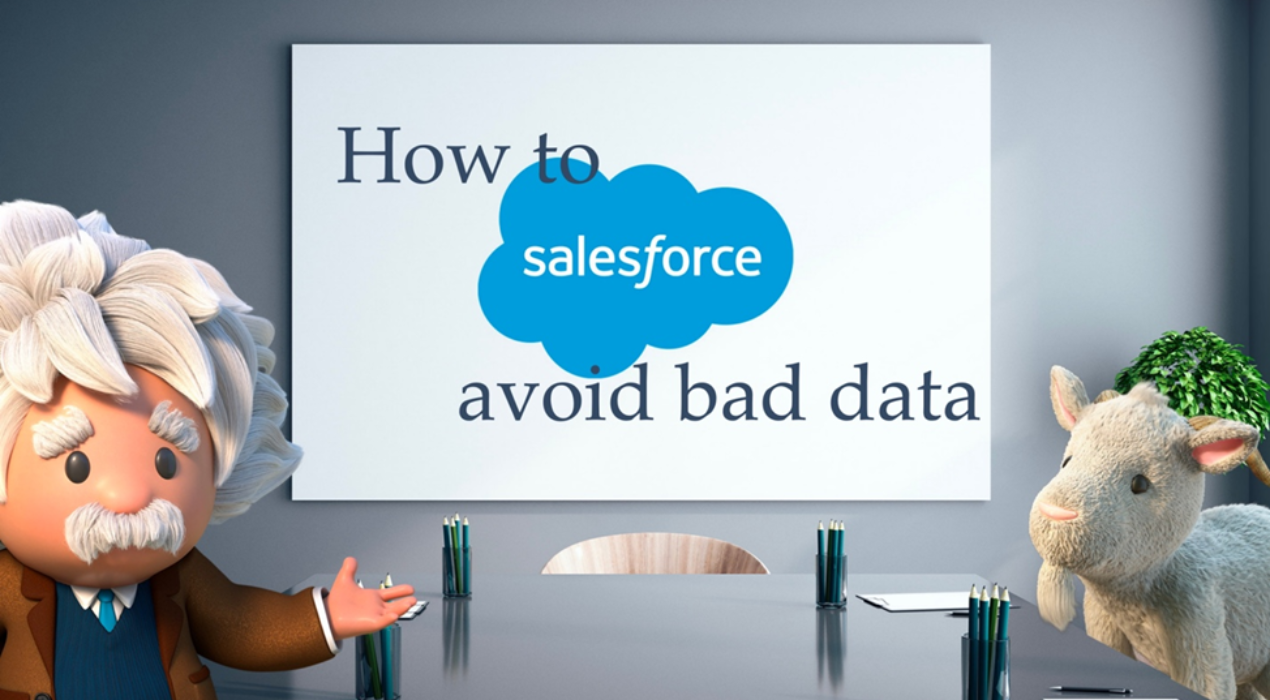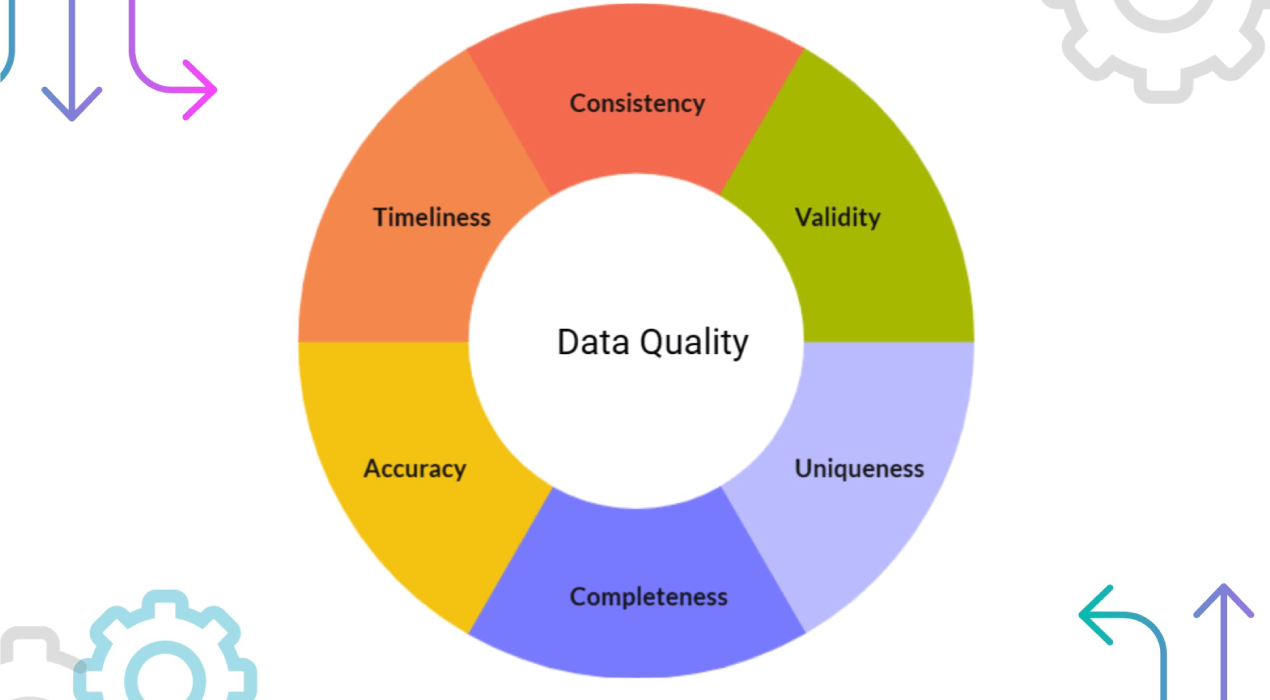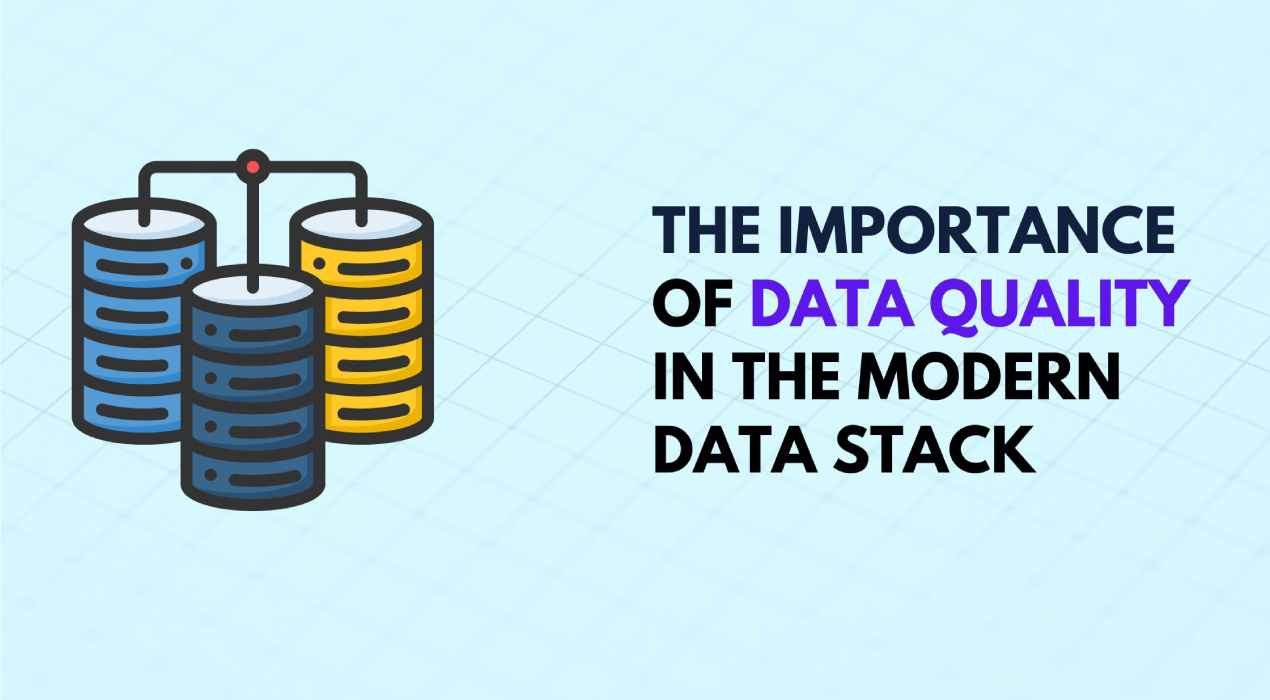
Experience the full features of the platform and discover the benefits it can bring to your organisation.
by submitting this form you agree to our privacy policy.
Experience the full features of the platform and discover the benefits it can bring to your organisation.
by submitting this form you agree to our privacy policy.

Forecast accurately - Inaccurate data can lead to inaccurate forecasting. This can cause problems when trying to budget or plan for future growth.
Make informed decisions - Bad data can distort your view of the customer landscape or specific opportunities, leading you to make poor decisions about targeting and strategies.
Missed opportunities - If you don't have complete and accurate information about your customers, you may miss out on important sales opportunities.
Lower customer satisfaction levels - If your data is inaccurate, it can lead to frustration and dissatisfaction on the part of your customers.
In our estimate, at least 5% of the Salesforce Sales Cloud data in every organization is inaccurate at any given time - resulting in more than $60 billion in lost productivity and missed opportunities each year. As you can see, data quality is essential in sales and customer management. Let’s first look at the main areas that you need to focus on.
This is Salesforce Sales Cloud simplified. Here is a pictorial view of Sales Cloud’s object relationship that I have used as the best practice diagram:

01
Lead
Leads are created manually or come through your marketing channels. This is the starting point of your sales funnel. Data completeness and accuracy at this stage are important as you would want your pipeline to be clean.
02
Contact
Leads get converted to a contact. This can happen when you are converting a lead to accounts or can be independently converted. Duplicate contacts will become a nightmare for the Sales or Account reps. There can be multiple contacts associated with an account.
03
Account
Accounts are created when a lead is converted into an account. Accounts can have lot of duplicates if your process determines that every BU of your customer should be created as a separate account. But all accounts should have at least 1 contact associated with it otherwise it becomes as orphan account. This account information can be connected to your Finance and/or Supply Chain systems. The relevancy of completed and accurate account information becomes more critical in such scenarios.
04
Opportunity
When business projects or sales are identified, those are treated as opportunities. Every opportunity should be associated with an account. An account can have multiple opportunities associated with them. Your opportunity maturity is managed through stages. You can define your own stages, but it is important to adhere to those stages during data entry or updates in opportunities. Your sales reporting will be pulled from your Opportunities and hence the importance of keeping it always up to date is critical.
05
Quote
A quote is typically an optional object. In some situations, this is not used. When used, there could be multiple quotes created for an opportunity. Quote also required direct feed of products and pricing that could be coming from other ERP systems.
If you keep your data quality high on these objects, you will see significant value in your sales and other upstream and downstream systems.
Several factors contribute to the emergence of data quality issues in Salesforce. One prevalent factor is inadequate data governance, referring to the process through which organizations manage and uphold their data. Without proper governance, data becomes susceptible to becoming outdated, inaccurate, and incomplete. An illustration of this is users inputting the names of cities, states, and countries, resulting in inconsistencies due to typos and inadvertent errors.
Another factor leading to data quality challenges is the absence of adequate training. The sales team may lack awareness of the correct procedures for inputting or updating information in Salesforce, resulting in inaccurate or incomplete data. Examples of such errors include accounts lacking proper contact associations, stages not consistently managed at every opportunity level, and phone number fields containing extraneous information.
Lastly, some businesses neglect prioritizing data quality. Failing to recognize the value of maintaining accurate and up-to-date sales data can have significant repercussions. For instance, in a large organization, someone created a new country named "Italia" in Salesforce, duplicating the existing country, Italy. Information was then entered under the new country without considering downstream consequences. This seemingly minor data quality issue led to a financial reporting nightmare when the finance department couldn't balance its numbers. It underscores the importance of monitoring even seemingly small data quality issues as a top priority for organizations.
In order to ensure that your data is of high quality, there are a few things you can do:
01
Know your data
Discover all the anomalies in your data. This would avoid surprises and help you create and remediation strategy. Today, tools can quickly perform data health check assessments for you instead of trying to review your data manually.
02
Invest in data cleansing
Data cleansing is the process of correcting known errors in your data. This can be done manually or using automated tools.
03
Regularly update your data
It's important to keep it up to date to reflect the current state of your customer relationships accurately. You should make it a habit to review and update your Salesforce data regularly.
04
Ensure complete and accurate data
Make sure that all the data you input into Salesforce is complete and accurate. This includes customer contact information, account details, opportunity information, etc.
In theory, the above steps can help a customer address a data quality issue. However, these approaches are after the fact and could be costly to implement. A better solution is to focus on continuous and intelligent data quality checks. This is a proactive approach that can help you avoid data quality issues before they arise. There are a few ways to do this, but some common methods include:
01
Data profiling
The process of analyzing your data to identify patterns and trends. This can help you identify potential problems so that you can take steps to prevent them.
02
Automated data quality checks
This involves using software to identify and correct errors in your data automatically. This includes things like duplicate records, incorrect field values, and missing data.
03
Automated Data cleansing
As we mentioned above, data cleansing is the process of identifying and correcting errors in your data. However, it can also be used as a preventive measure to ensure that your data is clean and accurate from the start.
By taking a proactive approach to data quality, you can avoid the costly and time-consuming process of cleaning up your data after the fact.
There are a number of different data quality software solutions in the market. You should consider your specific needs and requirements to find the right one for your business. Some things to keep in mind include:
01
Integration
The solution should integrate with Salesforce so that you can easily update and manage your data.
02
Ease of use
The solution should be easy to use so that you can get up and running quickly.
03
Accuracy
The software should be able to identify and correct errors in your data so that it is always accurate and up-to-date. Software should be able to use advanced logic to find duplicates, including fuzzy duplicates, and one-to-many relationships.
04
Automation
Look for a solution that offers automatic error correction so that you can avoid manual data entry.
Selecting the appropriate data-quality software solution can be a significant time and cost saver in the long term. Adopting a proactive strategy toward data quality is the most effective means of guaranteeing the accuracy and currency of your Salesforce data. Rather than waiting for issues to arise, take preemptive action now to avert future problems. Consider exploring RoutineAI as a potential tool.
Feel free to drop any questions. Best of luck with your sales endeavors!
Insightful and precise data serves as the backbone of any thriving business. Without it, you may find yourself missing out on opportunities or facing dissatisfaction from your customers – not an outcome any business desires! To ensure high-quality information in Salesforce Sales Cloud, implementing regular cleansing routines is crucial. These routines help maintain up-to-date records for each client and ensure uniformity across departments that handle this type of work independently, yet still require guidance when needed the most.
Full setup within 24 hours.
Experience the full features of the platform and discover the benefits it can bring to your organisation


